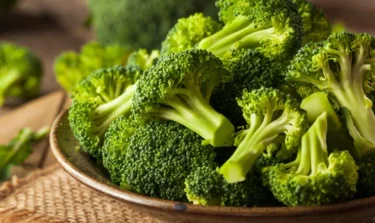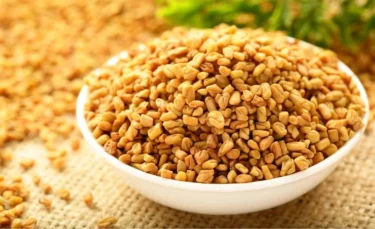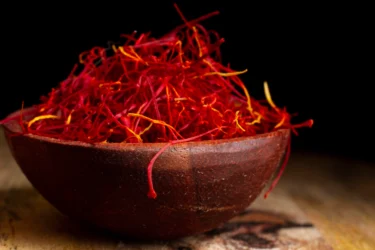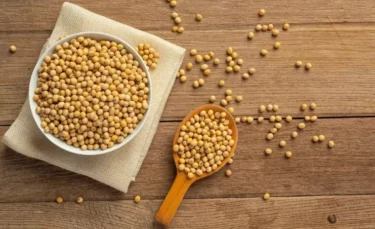Breast cancer is a disease where the cells and tissues in the breast change and grow out of control1. This extra growth can form a lump called a tumour. If the tumour keeps growing, it can spread to nearby breast tissue, reach the lymph nodes, and move to other parts of the body2. Breast cancer is the second most common cancer in women, after skin cancer3.
Getting diagnosed early often leads to more effective treatment. In most cases, screening tests like mammograms can detect breast cancer even before a lump forms. Around 99 in 100 women survive 5 years or more when breast cancer is caught early. Survival drops to about 87 in 100 if it spreads nearby, and to about 33 in 100 if it spreads further4,5. After diagnosis, doctors choose treatment by looking at how advanced the cancer is, what signals the cancer cells show (like hormones or HER2), and the person’s overall health. Treatment may include surgery, radiation, or medicines2.
In this blog, we will see what breast cancer is, its types, early signs, and how to lower the risk or manage it.
The breast is an organ in the front of the chest that makes milk after childbirth. It is more developed in women, while in men it stays smaller6.
Breast cancer happens when cells in the breast grow out of control. It usually begins in the milk ducts (tiny tubes that carry milk) or in the lobules (glands that make milk). Sometimes the cancer stays in place, but if it spreads into nearby tissue, it can grow and move to other parts of the body. If the cancer cells stay inside the duct, it is called ductal carcinoma in situ. If they break through the duct wall and spread into nearby tissue, it is called invasive ductal carcinoma. Sometimes, cancer can also begin in the lobules. When it spreads from the lobules into nearby tissue, it is called invasive lobular carcinoma7,9.
Breast cancer is one of the most common cancers worldwide, affecting about 2.3 million women each year. In India, it accounts for about 1 in 8 cancer cases, with around 1.6 lakh women diagnosed in 2020. Breast cancer survival rates depend on how early it is found and treated; about 66 out of 100 women in India live at least five years after diagnosis10,12.
The reasons for breast cancer could be due to hereditary or lifestyle-related factors.
Other causes of breast cancer are:
The modifiable risk factors of breast cancer are:
There are different types of breast cancer and they vary in tumour behaviour, grade, and treatment response.
Breast cancer is also divided into different subtypes depending on certain proteins called receptors. These include oestrogen and progesterone receptors and another called HER2. Some breast cancers use these proteins to grow faster.
Breast cancer is divided into 5 stages based on how much the cancer has grown and its spread to other parts.
Doctors use the TNM system to decide the cancer stage. T stands for the size of the tumour, N shows if lymph nodes have cancer, and M indicates whether the cancer has spread to distant parts.
The higher the stage, the more advanced the cancer is. Staging the cancer helps to formulate the best treatment plan and predict how likely it is that the patient will recover. It also helps track how the cancer changes over time during breast cancer treatment and predict the outcomes18.
Many individuals who have breast cancer don’t show symptoms in the early stage, so how to identify breast cancer? You can check for lumps in the breasts yourself or get them checked during regular checkups or screening from a doctor. Symptoms may be seen only when the cancer grows or spreads.
The common signs and symptoms of early and advanced breast cancer are:
The table below gives more clarity on breast cancer symptoms in early and advanced stages19,20.
| Symptoms | Early Stage | Advanced Stage |
| Lump or thickening in breast | Yes | Yes |
| Skin changes (redness, dimpling) | Yes | Yes |
| Nipple changes (pain, discharge) | Yes | Yes |
| Swollen lymph nodes | No | Yes |
| Breast pain | Rare | Yes |
| Bone pain or aches | No | Yes (bone involvement) |
| Weight loss or tiredness | No | Yes (liver involvement) |
| Shortness of breath or cough | No | Yes (lung involvement) |
| Headache or vision changes | No | Yes (brain involvement) |
Breast cancer can be checked by different methods. You can check your breasts for changes yourself, or a doctor can do a breast examination to feel for any lumps or unusual signs.
If you notice any changes in these areas, see a doctor promptly so that even small changes can be checked thoroughly.
This is done by a doctor who will gently feel and check the breasts and underarms for any lumps or unusual signs. They carefully look for anything different in the breast like changes in size, shape, or texture23.
There are certain screening tests available to check for breast cancer, as below:
Besides exams done by you or your doctor, there are imaging tests that can give a clearer picture of breast cancer.
The type of screening required for breast cancer depends on your medical condition and risks, as the doctor advises. It is recommended that women aged 40 to 74 years with average breast cancer risk get a mammogram every 2 years. Those who have risks like BRCA1 and BRCA2 gene mutation, or have had chest radiation at a young age, need more frequent screening as advised by the doctor21,23.
The treatment of breast cancer depends on the stage of breast cancer. No two patients are exactly the same, and treatment and responses to treatment can vary a lot.
Around the world, about 92 out of 100 women live at least 5 years after being diagnosed with breast cancer. In India, the numbers are lower because many women find out late or don’t get full treatment.
If breast cancer is found early and before it spreads to other parts, the survival rate increases. Therefore, regular checks and timely screening for women at increased risk can help find cancer early. In India, many women do not get routine mammograms, so doctors mainly use careful breast exams and special imaging tests to detect cancer early and make it easier to treat24,26.
There are various treatment options for breast cancer, the choice of which depends on the type of breast cancer and its stage, as follows:
Some patients may receive a combination of therapies to improve their chances of recovery. When breast cancer is diagnosed early, treatment can be planned to get the best outcome and help prevent cancer from coming back2,8.
Breast cancer cannot be completely prevented, but healthy lifestyle choices and certain measures may help lower the risk. These include:
You must see a doctor if you have any of these signs, which could possibly indicate breast cancer:
Breast cancer can be managed well if found in the early stages. Knowing the early signs and acting promptly helps early detection and treatment initiation. Many types of breast cancer respond well to advanced medicines, especially when diagnosed early, leading to better outcomes and improved recovery.
Most people don’t show any early signs of breast cancer. As the cancer grows, you might feel a lump in the breast. Other signs include changes in breast size or shape, nipple redness or sores, skin dimpling, swelling in the armpit, or persistent breast pain not related to periods8,27.
Breast cancer is diagnosed by checking the breast for lumps or changes, getting imaging tests like mammograms, and confirming with a biopsy27.
Some types of breast cancer are hereditary. The BRCA1 and BRCA2 genes, which control cell growth, can undergo mutations causing cancer. The child can get cancer if it is passed from parents, but not everyone with this gene will develop cancer12.
You cannot completely prevent breast cancer, but healthy eating, exercise, and limiting alcohol use can lower the risk. High-risk individuals can talk to a doctor about hormone therapy or surgery to reduce cancer risk27.
Disclaimer: The information provided here is for educational/awareness purposes only and is not intended to be a substitute for medical treatment by a healthcare professional and should not be relied upon to diagnose or treat any medical condition. The reader should consult a registered medical practitioner to determine the appropriateness of the information and before consuming any medication. PharmEasy does not provide any guarantee or warranty (express or implied) regarding the accuracy, adequacy, completeness, legality, reliability or usefulness of the information; and disclaims any liability arising thereof.
Links and product recommendations in the information provided here are advertisements of third-party products available on the website. PharmEasy does not make any representation on the accuracy or suitability of such products/services. Advertisements do not influence the editorial decisions or content. The information in this blog is subject to change without notice. The authors and administrators reserve the right to modify, add, or remove content without notification. It is your responsibility to review this disclaimer regularly for any changes.
Breast cancer is a condition in which the cells in the breast proliferate out of control. Breast cancer comes in several forms and based on which breast cells develop into cancer, the type of breast cancer is determined1.
It is crucial to realise that the majority of breast lumps are referred to technically as a tumour but may be benign and not cancerous (malignant). Some benign breast lumps can increase a woman’s risk of breast cancer, even if the majority of them are not life-threatening. Any breast lump or change in the breast should be examined by a medical professional to determine whether it is benign or malignant (cancer) and whether it may increase your risk of developing cancer in the future.
Different areas of the breast may be affected by breast cancer. Connective tissue, ducts and lobules are the three fundamental parts of a breast. The glands that generate milk are called lobules. In order to reach the nipple, milk passes through ducts. Everything is wrapped in and held in place by connective tissue, which is composed of fibrous and fatty tissue. Most breast cancers begin in the lobules or ducts.
Breast cancer can spread outside the breast via lymphatic and blood arteries. Breast cancer is said to have metastasised when it spreads to other areas of the body.
There are several parts to the breast where cancer can start:
Occasionally, breast cancers develop in tissues other than the breast. Sarcomas and lymphomas are the names of these cancers, which are not typically thought of as breast cancers.
You must be aware of how your breasts typically feel and look. Mammograms do not always detect breast cancer, despite the importance of routine screening tests for the disease. This implies that it’s crucial for you to check your breasts routinely and look out for any changes.
The most typical sign of breast cancer is a new tumour or lump (although most breast lumps are not cancerous). Breast tumours can sometimes be soft, spherical, tender or even painful and some are painless, like a hard mass with irregular borders.
The following are some of the signs of breast cancer:
There are numerous benign (non-cancerous) breast disorders that can also cause these symptoms. Nevertheless, it’s crucial to get any new breast tumour, lump or alteration examined by a skilled medical practitioner so the cause can be identified and treated, if necessary.
Keep in mind that regular breast cancer screenings are crucial. Breast cancer can be detected early, before any symptoms are noticed, through mammography. You have a better chance of receiving effective treatment if breast cancer is detected early.
One of the most crucial things you can do to maintain your health after receiving a breast cancer diagnosis is exercise. Exercise or any other home remedies cannot help in eliminating any cancer. However, according to research, women who exercise have a higher quality of life and experience fewer side effects both during and after treatment. Additionally, studies have shown that exercise improves mood, stamina and general health and fitness. These factors are crucial for the health of the mind and body, especially when a person is dealing with something as stressful as undergoing cancer treatment.
Breast cancer may limit your ability to move your shoulder and arm or carry out daily tasks like getting dressed, taking a shower and combing your hair. Your arm and shoulder’s range of motion may be restricted by pain and stiffness5.
That is why it’s critical to perform exercises to regain movement in your arm and shoulder. Along with that, you will need to focus on exercises for overall fitness. Exercises must also be done in the post-surgery recovery stage to aid in reducing post-surgery side effects and speed up your return to regular activities.
Exercises are especially more crucial if you have radiation therapy following surgery to maintain your arm and shoulder flexible. Your arm and shoulder may still be affected by radiation even after your therapy is over. As a result, it’s critical to establish a regular exercise routine to preserve arm and shoulder mobility following breast cancer radiation treatments.

Also known as cardio, this is a sort of exercise that increases your heart rate and may make you sweat. Exercises like walking, running, rowing, riding a bike or swimming are all very effective cardio exercises. It is advised that patients diagnosed with breast cancer do cardio for at least 30 minutes five days a week (or 150 minutes total). This type of physical activity enhances heart health and aids in maintaining a healthy weight. Many people also find it helpful for stress management and preserving feelings of positivity.
Cardiovascular exercises increase blood flow to all parts of the body, help with better oxygen retention, keep the joints smooth and aid in digestion. They improve sleep quality, which in turn helps with stress management.
Studies3 can show that breast cancer survivors and those carrying the gene for the same benefit from staying active. Other studies4 have found that the chances of recurrence of cancer are lower among people who exercise regularly.

As explained, breast cancer may limit shoulder movement. The trick is not to go overboard and strain your shoulders. People new to shoulder exercises can try shoulder rotation, plank, shoulder stretch, wall pushups and lifting dumbbells that are not heavier than 1 kg each.
People who work out in gyms can try dumbbell shoulder presses, arm circles and one-arm dumbbell rows. Talk to your doctor before you hit the gym after your diagnosis or surgery.

The arms, too, must be exercised so that your daily activities can continue uninterrupted. Simple home exercises that can free up your arm are- tricep dips, wall pushups, bicep curls with gentle weights and plank.

Yoga is a great way to stretch sore and aching muscles without causing further injury. Some ‘asanas’ or postures are particularly beneficial for the chest, shoulder and arm muscles- dhanurasana, marjaryasana, uttana shishosana and garudasana.
For control, stress and anxiety, balasana, sukhasana and viparita Karani will come to your assistance.
Some exercises are best avoided when you are ill or recovering. Your body is vulnerable and the best way forward is to strengthen it with limited doses of exercise.
It is imperative that you avoid-
Also Read: Best Exercises for Fatty Liver You Should Try
The start of treatment is not the right moment to start a rigorous fitness regimen. You’ll probably have days when you feel energised and days when you feel more worn out.
Also Read: 7 Best Exercises to Lose Weight at Home
Breast cancer requires immediate and categorical treatment. The treatment and, in fact, the diagnosis of cancer can be stressful for the mind and body of the patient. That is why doctors recommend regular exercise to help your body cope with and respond to treatment. Exercise also speeds up recovery post-surgery. Start exercising when your doctor advises.
Also Read: Penile Cancer: Symptoms, Diagnosis & Treatment
Ans: It is difficult to say for sure if exercise lowers cancer chances. But some studies have found that since exercise regulates the secretion of oestrogen and insulin, it may be beneficial against the development of cancer cells in the breasts.
Ans: Exercise is a simple and extremely efficient way to manage pain, improve mobility and control stress. Exercise may not directly cure you, but it will help by keeping your mind and body fit.
Ans: While exercise does not cure cancer, some exercises will help with symptom management and relieve stress. Arm and shoulder exercises like planks, wall pushups, shoulder rotation and yoga will help. Regular cardio activities like power walking, swimming and cycling are recommended based on the patient’s health.
Disclaimer: The information provided here is for educational/awareness purposes only and is not intended to be a substitute for medical treatment by a healthcare professional and should not be relied upon to diagnose or treat any medical condition. The reader should consult a registered medical practitioner to determine the appropriateness of the information and before consuming any medication. PharmEasy does not provide any guarantee or warranty (express or implied) regarding the accuracy, adequacy, completeness, legality, reliability or usefulness of the information; and disclaims any liability arising thereof.
Breast cancer is one of the most common cancers in women. It may also occur in men, although very rare. Breast cancers can start from any of the different parts of the breast1. The breast is an organ composed mainly of glands, ducts and fatty tissue. In women, the breast makes milk for feeding newborns and infants.
The most common types of breast cancer are2:-
The cancer cells begin in the ducts and then grow outside the ducts into other parts of the breast tissue. Invasive cancer cells can also spread or metastasise, to other parts of the body.
The cancer cells begin in the lobules and then spread from the lobules to the breast tissues that are close by. These invasive cancer cells can also spread to other parts of the body.
There are other types of breast cancers as well, which a doctor usually diagnoses with the help of lab tests and biopsies.
Breast cancer must not be left untreated once diagnosed. The treatment for breast cancer comprises surgery, chemotherapy and radiation therapy. Proper diet and food supplements help in combating and overcoming, partially or otherwise, the side effects of the treatment cycle, especially chemotherapy and radiation.
Good nutrition is the key for cancer patients throughout the various phases of treatment and after. The treatment may affect the way your body metabolises certain foods and uses nutrients and this varies for each individual.
During the treatment process, your diet must help build up your strength. You must eat high protein, high-calorie foods which will promote the following-

If you had surgery, chemotherapy or radiation therapy, you need a lot of protein to feel fit and fight off infections. The body loses substantial immunity in the process of breast cancer (and other cancer) treatment. Fish, poultry, lean meat, eggs, low-fat dairy products, nuts and nut butter, dried beans, peas, lentils and soya foods are all good sources of protein.
In my opinion, depending on whether you are vegeterian or follow other diets, increase your consumption of poultry, fish, and legumes like beans and lentils for a healthy source of protein. Scientists suggest daily protein consumption may help cope with breast cancer3. One to two servings of soy food per day, such as tofu, edamame, and soy milk, may also be included assuming soy is used in moderation.
Dr. Rajeev Singh, BAMS

Grapes are a rich source of the antioxidant resveratrol, which has the potential to possibly stop cancer from starting in the breast4. You must eat grapes with their skin intact as it has the most resveratrol.

These have always been popular for their medicinal properties. They contain high levels of the flavonoid quercetin beneficial for lung and colon cancers5. Figs can reduce inflammation which is the major cause of cancer.

Cruciferous vegetables must be included in your regular diet. Broccoli has a high amount of a phytochemical called sulforaphane, which is a cancer-fighting plant compound6. These vegetables are effective sources of nutrition and also boost immunity.

The antimicrobial and antitumor properties of garlic and onion have been known for over 1000 years. They must be part of your daily diet.

Tea (both green and black) has active antioxidants that keep the harmful effects of free radicals in check, which cause cellular damage7. Fresh tulsi tea can be a good choice.

It is already an integral part of Indian foods. Curcumin I, II and III inhibit carcinogenesis and have proven anti-inflammatory properties. It is also an antitumour agent8.

This herb is rich in carnosol, a phytochemical that can slow the growth of cancer cells, strengthen the immune system and limit the production of cancer-related hormones. It acts as an antioxidant and can be included in your diet during and after breast cancer treatment9.

This ingredient in every Indian kitchen helps inhibit tumour cell growth. It is useful for patients with breast cancer and it has anticancer potential10. You may include it in your diet during and post-treatment.

This exotic flower product has excellent inhibitory properties against cancer cells11.

Nutritional properties of soya milk and other soya products make them preferred inclusions in your breast cancer diet.
If you ask me, roughly 25 to 30 grams of fibre should be taken daily. To my knowledge, whole grains are rich in vitamins, minerals, phytochemicals, fibre, and complex carbs. According to a study12, eating a lot of fibre may keep you away from breast cancer and other hormone-dependent tumours. Make sure that at least 50% of the grains in your diet are whole grains, such as brown rice for dinner or whole-grain bread for lunch.
Dr. Siddharth Gupta, B.A.M.S, M.D (Ayu)
Also Read: Jaundice: Symptoms, Treatment, Causes and Types
Apart from the usual culprits like sugary foods, fatty foods and processed and preserved food, if you suffer from breast cancer, make sure you avoid the following:
Also Read: How Exercise Can Help You Deal with Breast Cancer
The most important part of breast cancer treatment is a regular follow-up, maintaining a healthy lifestyle and following a good diet. Apart from keeping to a diet rich in proteins, minerals, vitamins and nutrients, you must always be well hydrated. Drink plenty of water, exercise and keep your weight in check, as fat and obesity are inimical for breast cancer. Form a habit of taking small meals rather than heavy ones, spaced throughout the day. Do enough activities caring to avoid stress on the arm where the axillary nodes have been surgically removed.
Also Read: Best Summer Foods to Keep Your Body Cool
Your diet should be such that you eat enough nutrients to keep your body strong. A balanced diet consisting of fruits, vegetables, grains, beans, nuts, seeds, meats/eggs and dairy products is ideal. Talk to your doctor about any additional supplements that you may need.
Cruciferous vegetable-based juices, i.e. juices that contain vegetables like cabbage, spinach or any other belonging to the family of cruciferous vegetables containing loads of vitamin A.
You may go for any of these juice combinations:
– Orange, carrot, turmeric.
– Green apple, beetroot.
– Beetroot, carrot orange, cucumber.
Make sure to consume freshly prepared juices and not packaged ones. Whole fruits are always better than juices because they include all the fibre content.
Eggs are rich in powerful antioxidants, lutein and zeaxanthin. It inhibits cancer cell growth in breast cancers. It is good to have an egg a day unless you suffer from any other health conditions and must avoid it.
Berries, broccoli, tomatoes, walnuts, grapes and other coloured and leafy vegetables, fruits and nuts from the list. All plant foods that contain phytochemicals typically comprise foods for fighting your battle against breast cancer naturally.
Disclaimer: The information provided here is for educational/awareness purposes only and is not intended to be a substitute for medical treatment by a healthcare professional and should not be relied upon to diagnose or treat any medical condition. The reader should consult a registered medical practitioner to determine the appropriateness of the information and before consuming any medication. PharmEasy does not provide any guarantee or warranty (express or implied) regarding the accuracy, adequacy, completeness, legality, reliability or usefulness of the information; and disclaims any liability arising thereof.